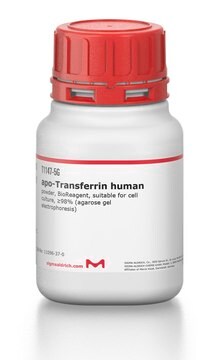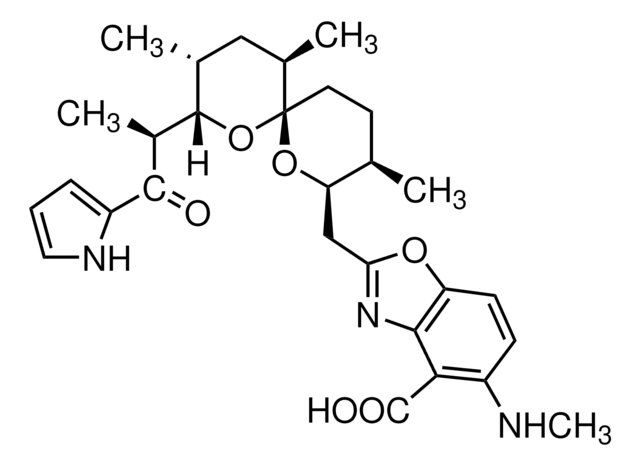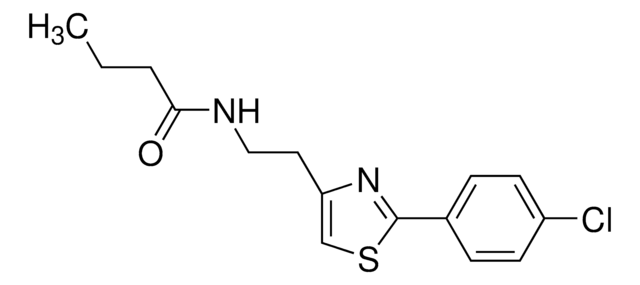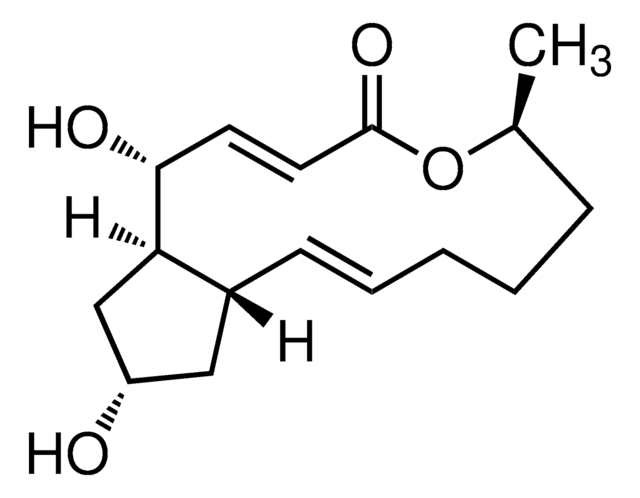T9033
Thapsigargin
≥98% (HPLC), solid film
Synonym(s):
(-)-Thapsigargin, TG1
About This Item
Recommended Products
biological source
plant (Thapsia garganica)
Quality Level
Assay
≥98% (HPLC)
form
solid film
solubility
acetonitrile: soluble 9.80-10.20 mg/mL
DMSO: soluble
ethanol: soluble
storage temp.
−20°C
SMILES string
[H][C@@]12C([C@H](OC([C@]3(O)C)=O)[C@]3(O)[C@@H](OC(CCC)=O)C[C@]2(C)OC(C)=O)=C(C)[C@H](OC(/C(C)=C(C)/[H])=O)[C@H]1OC(CCCCCCC)=O
InChI
1S/C34H50O12/c1-9-12-13-14-15-17-24(37)43-28-26-25(20(5)27(28)44-30(38)19(4)11-3)29-34(41,33(8,40)31(39)45-29)22(42-23(36)16-10-2)18-32(26,7)46-21(6)35/h11,22,26-29,40-41H,9-10,12-18H2,1-8H3/b19-11-/t22-,26+,27-,28-,29-,32-,33+,34+/m0/s1
InChI key
IXFPJGBNCFXKPI-FSIHEZPISA-N
Looking for similar products? Visit Product Comparison Guide
General description
Application
- to study its effect on cyclase-associated protein 2 (CAP2) expression in liver cancer cells
- in the cell viability experiment using ARPE -19 cells (human retinal pigment epithelial cells)
- to study its effect on lipocalin 2 (LCN2) glycosylation in primary hepatocytes
- to study the consequences of calcium depletion in the endoplasmic reticulum (ER) of cells
- to study its effect on tissue inhibitor of metalloproteinases-1 (TIMP-1) mRNA expression in rat Sertoli cells
Biochem/physiol Actions
Signal Word
Danger
Hazard Statements
Precautionary Statements
Hazard Classifications
Eye Irrit. 2 - Resp. Sens. 1 - Skin Irrit. 2 - STOT SE 3
Target Organs
Respiratory system
Storage Class Code
11 - Combustible Solids
WGK
WGK 3
Flash Point(F)
Not applicable
Flash Point(C)
Not applicable
Personal Protective Equipment
Certificates of Analysis (COA)
Search for Certificates of Analysis (COA) by entering the products Lot/Batch Number. Lot and Batch Numbers can be found on a product’s label following the words ‘Lot’ or ‘Batch’.
Already Own This Product?
Find documentation for the products that you have recently purchased in the Document Library.
Customers Also Viewed
Our team of scientists has experience in all areas of research including Life Science, Material Science, Chemical Synthesis, Chromatography, Analytical and many others.
Contact Technical Service














